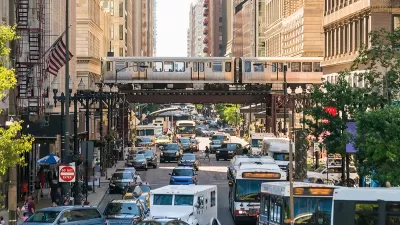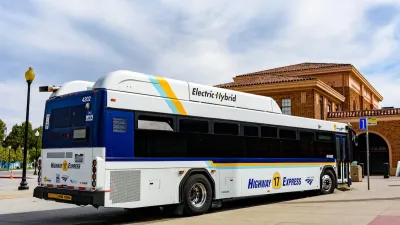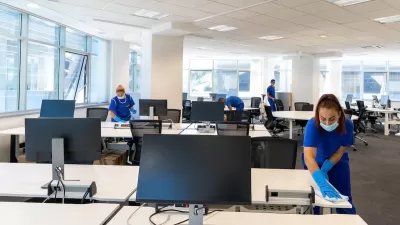After months of working from home, some former commuters miss the familiar routine of going to and from the office.

For many workers who got the opportunity to work from home during the pandemic, the shift away from office work has brought extra time, reduced stress, and savings on transportation expenses. But while no one enjoys sitting in traffic or jostling their way onto a crowded bus, some have come to realize that their commutes provided a much-needed buffer between home and work, letting them ease into their day and wind down on their way home in a neutral environment.
Whether they drove, took transit, walked, or biked, commuters of all stripes miss the time to listen to podcasts or music, read, and spend time outdoors. With their daily travel time reduced to a walk between the bedroom and kitchen, people who previously commuted by biking or walking find themselves struggling to maintain a healthy level of physical activity. Those who have small children or a busy household miss the alone time, writes Katherine Shaver.
Workers who miss their commute, however, are still a minority, and the modern work-life balance has been shifting since well before COVID-19. The post-pandemic office will surely look different, and new commute patterns will affect everything from public transit budgets to real estate to restaurants that cater to lunch crowds. As workers adjust to the increased commingling of home and work, we'll have to find new ways to ease the transition and establish healthy boundaries.
FULL STORY: Months of pandemic teleworking have left some missing their commutes

Planetizen Federal Action Tracker
A weekly monitor of how Trump’s orders and actions are impacting planners and planning in America.

Maui's Vacation Rental Debate Turns Ugly
Verbal attacks, misinformation campaigns and fistfights plague a high-stakes debate to convert thousands of vacation rentals into long-term housing.

Restaurant Patios Were a Pandemic Win — Why Were They so Hard to Keep?
Social distancing requirements and changes in travel patterns prompted cities to pilot new uses for street and sidewalk space. Then it got complicated.

In California Battle of Housing vs. Environment, Housing Just Won
A new state law significantly limits the power of CEQA, an environmental review law that served as a powerful tool for blocking new development.

Boulder Eliminates Parking Minimums Citywide
Officials estimate the cost of building a single underground parking space at up to $100,000.

Orange County, Florida Adopts Largest US “Sprawl Repair” Code
The ‘Orange Code’ seeks to rectify decades of sprawl-inducing, car-oriented development.
Urban Design for Planners 1: Software Tools
This six-course series explores essential urban design concepts using open source software and equips planners with the tools they need to participate fully in the urban design process.
Planning for Universal Design
Learn the tools for implementing Universal Design in planning regulations.
Heyer Gruel & Associates PA
JM Goldson LLC
Custer County Colorado
City of Camden Redevelopment Agency
City of Astoria
Transportation Research & Education Center (TREC) at Portland State University
Jefferson Parish Government
Camden Redevelopment Agency
City of Claremont





























